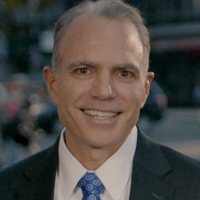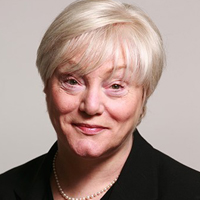
TVN Focus On Journalism | Collaboration Lessons For A Post-Pandemic World

With 2020’s move to an all-virtual workplace for many, what will this year’s lessons mean for collaboration going forward? Will people still spend their weekdays on planes, traversing the country to meet with clients in person or can more of those meetings now happen more efficiently on Zoom? And what did spending a year working remotely teach everyone about working together on digital platforms?
“Technology will not get you better collaboration. It’s the behaviors around how you use technology that will allow for better collaboration,” says Erica Dhawan, author of the forthcoming book, Digital Body Language and a speaker on digital collaboration in the 21st century.
“Having more technology can create cultures of digital burnout,” she says. “It’s about using technology in ways that don’t focus on connecting more but connecting more intelligently. Collaboration should not be about more meetings and more emails, but about bringing the right people together to allow us to innovate.”
Preparation Is Key
Companies that perhaps best made the transition to virtual collaboration were those that had already been preparing to make the shift to digital.
The E.W. Scripps Co. already had centralized some of its news operations around a central desk based in Denver. Scripps’ staff of about 40 there produces original stories as well as collects and distributes stories to and from its 60 television stations in 42 markets.

Sean McLaughlin
“When the pandemic hit, I think it really allowed us to use that structure of centralization and take it to a whole new level,” says Sean McLaughlin, Scripps’ VP of news.
Consolidating some newsgathering operations and redistributing the resulting content has actually allowed Scripps to expand its news operations in local markets during the pandemic. In October, Scripps added local newscasts to Fox affiliate WYSM in Lansing, Mich., using local, regional and national content, all produced by Scripps.
“One of the biggest things we’re focused on across the company is more in-depth reporting,” McLaughlin says. “Viewers don’t want quick flashes; they’d rather have deep dives. Meanwhile, news directors have newscasts at 4, 5, 6 and 7 to fill. How can they use their local resources and some content from our central desk to build out their newscasts to offer viewers something that’s robust and unique?
“The pandemic has allowed us as a company to hit a good stride for integrating these resources,” he says.
For example, Scripps used the central desk to cover the election, while its local station reporters could drill down on stories that were important in their own markets.
“The unique local political story was centered around the nuances of how to vote and the mail-in process, and those stations leaned on our central-desk structure to cover the nuts and bolts of the national election,” McLaughlin says.

Ray Thurber
Collaboration is made smoother between Scripps’ stations due to the partnership between Scripps’ news and engineering departments, led by McLaughlin and Ray Thurber, VP engineering.
“Every station is connected to each other via live video and they can share files with each other across networks,” Thurber says.
The preexisting and constant collaboration between McLaughlin and Thurber also gave Scripps an advantage when the pandemic hit. Prior to it, the two had already spearheaded putting in place virtual control rooms. The company had seen some local stations go off the air when hurricanes hit their markets, and McLaughlin and Thurber wanted to be ready, even though as of yet they have not had to use the virtual control rooms.
“This year, we’ve had earthquakes, hurricanes, civil unrest, Supreme Court nominations, fires and elections. We didn’t have time to be down,” McLaughlin says.
Community-Focused Collaboration
Stations already tend to be community-focused and collaborative, and the pandemic brought out that tendency even more. Sometimes, good collaboration is just about being willing to work the phone.

Kristie Gonzales
Almost as soon as her staff was sent home to quarantine in March, Kristie Gonzales, president and GM of Tegna-owned KVUE in Austin, Texas, jumped into action.
“Our economy thrives on music and events,” she says. “I looked around and realized there was not a good landing place for help right now. So that Friday night, I called David Smith, the local United Way CEO, to see what we could do. He put that challenge to his team. By Sunday, we had all agreed to do something.
“I called every general manager at Austin’s local radio and TV stations and asked them if they would be willing to do a one-day telethon with us — well, really it was a digi-thon because people don’t use phones anymore. Every single one of them said ‘yes’ immediately.”
Together, all of Austin’s broadcasters partnered to air All Together ATX on April 3, which ultimately raised $7 million for a community that was hard hit by both the cancellation of South by Southwest in March, Austin City Limits in October and countless live events and festivals throughout the spring, summer and fall.
KVUE’s marketing team managed the promotional campaign for the event, creating a Slack channel to communicate and Smartsheets to share assets and manage the project.
“Email was the last tool we used,” Gonzales says. “We would do daily Zoom calls and that was perfect if you had a question for the organizers. You could just drop in and ask.”
Much of what Gonzales has learned during the pandemic she hopes to continue afterward, she says.
“We’ve upped our level of communication to compensate for a lack of in-person meetings and that has been a huge lesson for us. I want to keep communicating like that going forward. In some cases, I was relying on in-person happenstance, and now getting the whole station together will happen a lot more. The technology allows you to invite more people to the table more often.”
TV stations in the country’s largest market of New York City also found themselves collaborating but for different reasons. Covering protests against racial injustice and police brutality weren’t always safe because in many cases the media were targets, so rival TV stations began collaborating on gathering footage so they could keep crews out of danger.

Lew Leone
“Every protest was turning violent,” says Lew Leone, SVP and GM of Fox’s WNYW there. “We weren’t so quick to want to send our people in. Violence was widespread and spotty. You didn’t know where it was going to be. We took our mic flags off because the media were being attacked.
“For example, at the Barclays Center in Brooklyn, we got good pictures and then reported the story safely away from the scene,” he says. “We’ve collaborated with the other TV stations in this market on a somewhat informal basis. We all want to be safe and cover the story. We are sharing assets and video to a much greater extent than we normally would. We’re competitors, but in this situation we’re also collaborating with the other TV stations.”
Stations in New York also collaborated to run specials for local charities Robin Hood, which fights poverty, and City Harvest, which fights food insecurity, to help raise resources for those in need due to the pandemic.
Working Together To Complete Larger Projects
A large reporting collaboration led by the Howard Center of Investigative Journalism at the University of Maryland with six other universities — Arizona State University, Boston University, Stanford, University of Arkansas, University of Florida and University of Oregon — started before the pandemic but has continued throughout it. The collaboration started as a project to investigate homelessness. Later, some of the partners continued their work together to investigate evictions.

Kathy Best
“We worked collaboratively on gathering the data, reporting, writing and ended up putting out a package of stories focused on homelessness,” says Kathy Best, director of the Howard Center. “One of the things we promised in our pitch to the Scripps-Howard Foundation [which funds the center] was that we would demonstrate the power of collaboration. Part of our mission as we defined it was to collaborate with other universities to produce investigative work.”
The first step was to gather the data. Professors at the different partnering schools tasked some of their students with reaching out for data and submitting Freedom of Information Act requests to get less available data, says Sean Mussenden, data editor at the Howard Center.
“Collaboration is really important to us as newsrooms are shrinking,” Best says. “You have to take advantage of all of the skills in the room to do the best work you can. The way you can do that is by collaborating. We can teach students how to break out of silos, to break down walls, to learn the languages of different disciplines and to respect the time it takes to do a deep-data analysis. Those are not things that you snap your fingers and they are done. You need to teach that language and mindset.”

Sean Mussenden
To collaborate effectively, “you have to know enough about what the person with whom you are collaborating brings to the table, how to speak their language and understand what they are and are not capable of on any given project,” Mussenden says. “You might not know how to build an interactive web app, but [as a collaborator on a project] you should understand how those people do their work.”
The Howard Center ultimately compiled a tome of stories on homelessness and put them on a website built by students. Later, the Associated Press moved the lead story on the criminalization of homelessness, which was picked up by hundreds of papers including the New York Times and the Washington Post. The collaboration’s lead story on evictions also was picked up by the AP and the group worked with Gannett to distribute it internationally. Gannett also ran a special section that included some of the eviction stories.
Good Communication Essential
Whether in-person or remotely, the key to effective collaboration is good communication, and that’s something that has to be managed skillfully.
“We had to change our communication dramatically,” Scripps’ McLaughlin says. “We were traveling all over the place before. I started having two calls a week with all of the news directors, which I’ve now cut to once a week, but it’s been really important to get together and share examples of what we’re seeing.”
“Communication is absolutely the key,” Best agrees. “In the fall and spring, we were having weekly meetings with just the editors from all of the schools. Over the summer, we had daily meetings with the editors and the student reporters who were working together. By talking together every day and problem solving together, it really helped the students be invested in the work that everybody was doing, and it helped the professors understand what the students were up against and how we could help.”
Another key is setting clear expectations, Messenden says: “Having everyone understand why the collaboration is being done and what all parties hope to get out of it is important.”
Everyone said they had learned things about collaborating and communicating that they planned to continue once the pandemic is finally over and people can go back to working in their offices.
Says Dhawan: “People are seeing that a lot of the ways we were working pre-pandemic were already inefficient. We already had bad meetings and bad emails. It’s time to create not just a new normal but a better normal.
“Companies will realize they need to invest more than ever in digital communication skills, project management and general technological savviness. These skills are going to be more important than ever.”
Newsrooms see a “better normal” in terms of collaboration on the other side of COVID-19. Leaders say remote pandemic projects between universities, stations and even different station groups have revealed new efficiencies in… Click To Tweet























Comments (0)